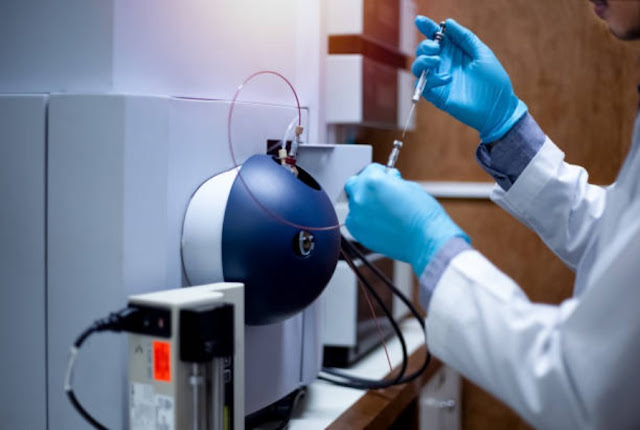Warning Signs of Diabetic Stroke

Diabetes is a chronic disorder that moves millions of persons
worldwide. It impacts blood sugar levels and increases the risk of various
health complications, including stroke. A diabetic stroke occurs when the blood
supply to the brain is disrupted, leading to potential long-term damage or even
death. Recognizing the warning signs of a diabetic stroke is crucial for early
intervention and better outcomes. This article will explore the warning signs
of a diabetic stroke, discuss the connection between diabetes and stroke risk,
and provide essential information on how to take prompt action. By
understanding these warning signs, individuals with diabetes, as well as their
loved ones and caregivers, can be improved prepared to recognize the symptoms
and seek immediate medical attention.
Understanding Diabetes and Stroke Risk
Diabetes is characterized by high blood honey levels
resulting from the body's inability to produce or use insulin effectively. The
link between diabetes and stroke is well-established. Peoples with diabetes are
at a higher risk of developing cardiovascular diseases, including stroke, due
to high blood pressure, high lipid levels, and increased inflammation. Individuals
with diabetes must manage their blood sugar levels and control other risk
factors to minimize the risk of stroke.
Recognizing the Warning Signs
A diabetic stroke can manifest through various warning
signs, which may differ from traditional stroke symptoms. Awareness of these
warning signs is essential, as prompt recognition and action can make a
significant difference in minimizing the impact of a stroke. The warning signs
of a diabetic stroke may include:
a) Sudden Weakness or Numbness: Weakness or numbness,
especially on one side of the body, is a common warning sign of a stroke. It
may affect the face, arm, or leg and occur suddenly or gradually.
b) Difficulty Speaking or Understanding: Slurred speech,
difficulty finding words, or sudden confusion can indicate a stroke.
Individuals may struggle to communicate or have trouble understanding what
others are saying.
c) Vision Changes: Sudden vision changes, such as blurred or
double vision, loss of vision in one or both eyes or difficulty focusing, can
be warning signs of a stroke.
d) Severe Headache: A sudden and severe headache, often labeled
as the worst annoyance of life, can be a warning sign of a hit. Other symptoms,
such as dizziness or vomiting, may accompany the headache.
e) Dizziness or Loss of Balance: Feeling unsteady, dizzy, or
experiencing a loss of balance or coordination can indicate a stroke.
Taking Action
If you or someone around you exhibits warning signs of a
diabetic stroke, it is crucial to take immediate action. Time is of the essence
and every minute counts in reducing the potential damage caused by a stroke.
Follow these steps:
a) Call Emergency Services: Immediately dial emergency
services or your local emergency number. Inform them that you suspect a stroke,
and provide them with the necessary information about the person's symptoms and
medical history.
b) Do Not Delay: Do not wait for the symptoms to improve or
worsen. Acting quickly and seeking medical attention is crucial.
c) Stay with the Person: If you are with someone experiencing
warning signs of a stroke, stay with them and offer reassurance. Ensure their
safety and keep them calm until medical help arrives.
d) Do Not Drive: If you suspect a stroke, it is important
not to drive the person to the hospital yourself. Emergency medical services
have the necessary equipment and expertise to provide immediate care during
transportation.
e) Provide Medical Information: If possible, inform the
medical personnel about the person's diabetes and any medications they are
currently taking. This information can help guide their assessment and
treatment.
Preventive Measures and Management
While recognizing the warning signs and seeking prompt
medical attention is crucial, taking preventive measures is equally important.
Individuals by diabetes can reduce their risk of stroke by:
a) Controlling Blood Sugar Levels: Managing blood sugar
levels within the target range can significantly reduce the risk of stroke and
other diabetes-related complications. Regular monitoring, medication
management, and lifestyle modifications are essential.
b) Managing Blood Pressure and Cholesterol: High blood heaviness
and cholesterol levels are major risk factors for stroke. Working with
healthcare professionals to control these conditions through lifestyle changes
and, if necessary, medication is essential.
c) Adopting a Healthy Lifestyle: Engaging in regular physical
activity, maintaining a healthy weight, following a balanced diet, and circumventing
smoking and excessive alcohol feasting contribute to overall cardiovascular
health.
d) Regular Medical Check-ups: Schedule regular check-ups
with healthcare professionals to monitor diabetes management, blood pressure,
cholesterol levels, and overall health. These check-ups allow for early
detection and intervention, reducing the risk of stroke.
Conclusion
Understanding the warning signs of a diabetic stroke is
crucial for individuals with diabetes, their loved ones, and caregivers. By
recognizing the symptoms and taking prompt action, the impact of a stroke can
be minimized, potentially saving lives and preventing long-term disability.
Managing diabetes effectively, controlling risk factors, and adopting a healthy
lifestyle is essential in reducing the risk of stroke. Raising awareness about
the warning signs of a diabetic stroke within the diabetes community can
empower individuals to seek immediate medical attention when necessary. By
staying vigilant, educated, and proactive, we can work towards reducing the load
of stroke in individuals with diabetes and promoting better overall health
outcomes.


